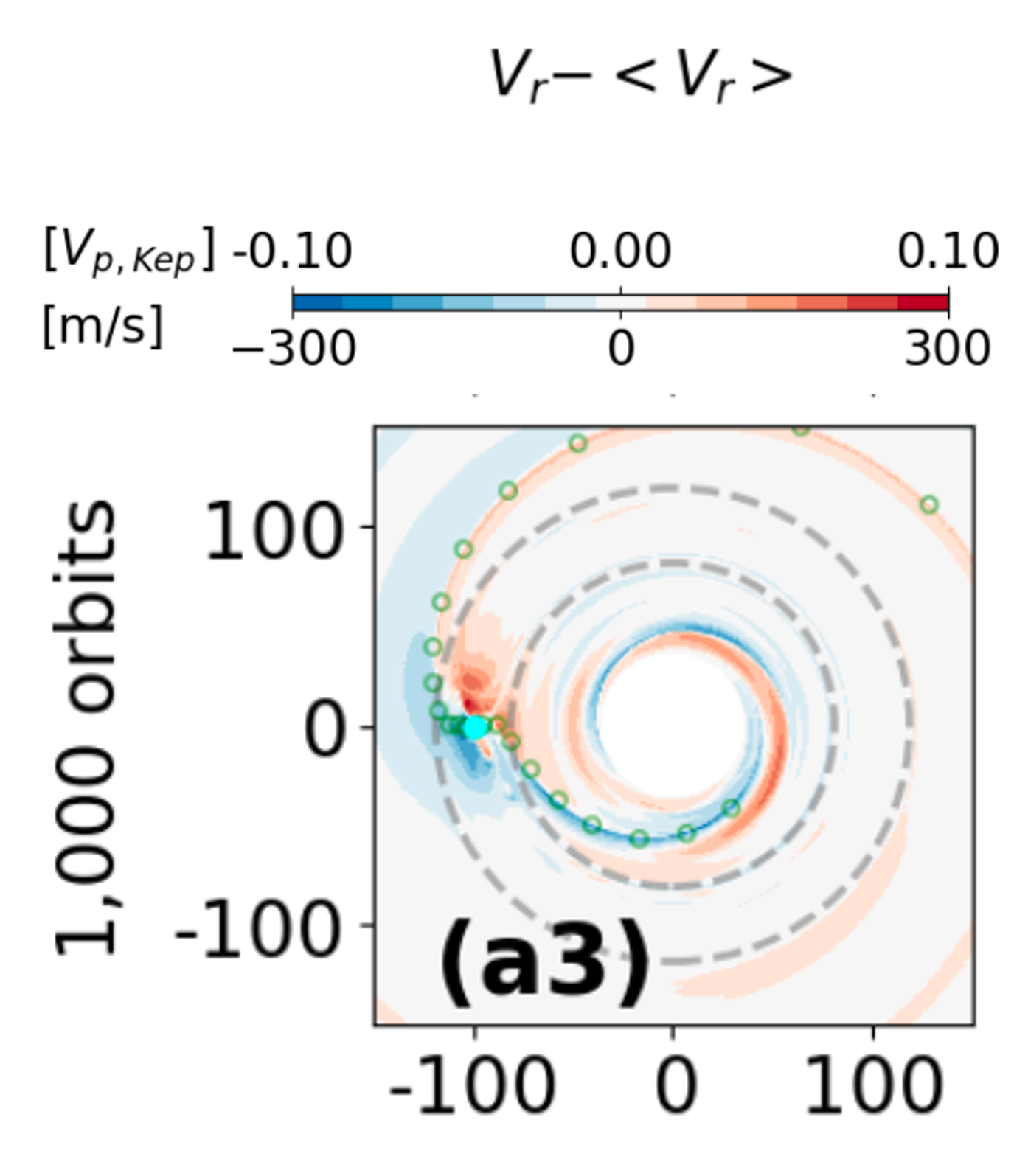Mind the kinematics simulation of planet-disk interactions: time evolution and numerical resolution
Published in ApJ, 2024
We conducted 3D hydrodynamic simulations to study velocity perturbations during planet-disk interactions, followed by radiative transfer post-processing to examine kinematic signatures in synthetic images. For the first time in disk kinematics simulations, we propose using residual velocity and channel maps—created by subtracting an azimuthally averaged background—to reveal planet-induced velocity perturbations. We also fully assessed the impact of two key simulation parameters, simulation duration and resolution. We find that steady kinematic patterns require longer runs (1,000 planetary orbits) and that velocities in spiral regions require high resolution (at least 14 cells per disk scale height) to meet convergence criteria. These findings provide guidance for selecting parameters in kinematic simulations of planet-disk interactions and help quantify planet-driven kinematic features to identify protoplanets in disks in the ALMA era.

Figure: The non-axisymmetric radial velocity perturbation at 2 disk scale height caused by a Jovian planet in a disk.
Recommended citation: Chen K., & Dong R. 2024, ApJ, 976, 49
Download Paper
